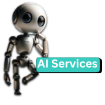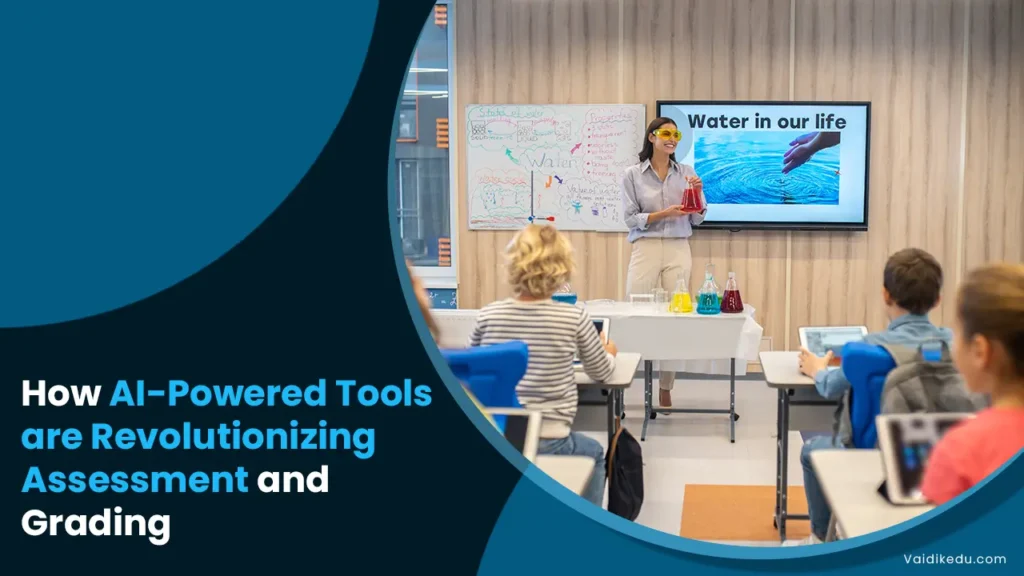Artificial Intelligence (AI) is becoming a reality in education, changing how teachers and students learn. One of the most revolutionary aspects of this technological revolution is the way it is being applied to assessment and grading. Historically, grading has been a laborious and subjective process that relies on human judgment that can be influenced by biases or inconsistencies.
Teachers around the world spend countless hours grading assignments, essays, and exams, taking valuable time away from lesson planning and direct student engagement.
However, with the introduction of AI-powered tools, the way we measure student performance is evolving into a paradigm shift that is characterized by efficiency, objectivity, and personalization.
Assessment systems with AI capabilities are made to automate the grading process and offer more than simply grades. These resources evaluate students’ answers, spot areas where they need to improve, and provide thorough feedback that can help teachers and students alike.
AI has the ability to analyze a variety of tests with exceptional accuracy and speed, including essays and multiple-choice questions. A number of issues with conventional grading systems, such as delays, irregularities, and a dearth of useful feedback, are addressed by this advancement in evaluation methodology.
The advantages of implementing AI-driven solutions in educational institutions go beyond convenience; they also have the potential to drastically alter the educational process for both teachers and students.
The use of AI in grading is not without its detractors, though. Teachers, legislators, and parents are debating issues including data privacy, the fairness of AI algorithms, and the possible decline in human engagement in education. When used properly, the benefits of AI-powered technologies greatly exceed the disadvantages, notwithstanding these difficulties.
By combining the effectiveness of artificial intelligence (AI) with the compassion of human teachers, we may develop an assessment Development environment that is more equitable, quicker, and more responsive to the various learning requirements of students.
The Impact of AI in Changing Grading And Assessment
- Automating Typical Grading Assignments
Multiple-choice and fill-in-the-blank questions are among the repetitious grading jobs that AI-powered applications excel at. Teachers may save a lot of time and focus on other worthwhile endeavors, like mentoring students or creating innovative lesson plans, by automating these procedures.
The speed at which AI can analyze hundreds of student replies and produce precise results in a matter of minutes has been demonstrated by tools such as Gradescope and Google Classroom’s AI features. This degree of effectiveness is especially advantageous for colleges with a small teaching staff and huge classrooms.
- Improving Objectivity And Diminishing Prejudice
Although crucial, human grading is prone to inadvertent biases impacted by things like handwriting quality, past performance, or even a teacher’s emotional state. By following preset standards and concentrating just on the student’s work, AI-powered grading systems remove these prejudices.
To ensure uniform evaluations across all submissions, AI systems such as Turnitin or Criterion, for instance, assess essays and written responses according to criteria including syntax, coherence, and logic. This impartiality fosters equity and increases confidence in the evaluation procedure.
- Student-Specific Feedback
The capacity to offer thorough and customized feedback is among the biggest benefits of AI-powered solutions. AI programs evaluate students’ answers to pinpoint certain areas that need work rather than just providing grades.
For example, an AI program analyzing a math test can determine whether a student has trouble with more complex applications or fundamental ideas. Similar to this, artificial intelligence (AI) may identify problems in essay structure, grammar, or critical thinking and provide useful recommendations for repair. Students are encouraged to adopt a growth mentality by seeing failures as teaching opportunities as a result of this individualized feedback.
- Endorsing Holistic Evaluations
AI tools are not just for conventional evaluation methods. Additionally, they can be utilized for formative assessments, monitoring pupils’ development over time, and evaluating soft skills like teamwork and creativity.
AI is used by programs like Carnegie Learning and Knewton to modify tests in real time, customizing questions to each student’s proficiency level. This flexibility guarantees that tests are neither overly simple nor overly complex, offering a reliable indicator of a student’s actual aptitude.
- Filling up The Learning Gaps And Enhancing Teaching
Beyond grading, AI-powered assessment systems examine patterns in student performance in the classroom and on an individual basis. For example, an AI system can notify teachers to go over a concept again if it determines that a sizable portion of students had trouble understanding it. Teachers are empowered to make well-informed decisions on curricular modifications and focused interventions thanks to this data-driven approach. This ongoing feedback loop improves learning outcomes and the quality of instruction over time.
- Large-Scale Testing Scalability
Grading thousands of papers within short time frames is a logistical difficulty for standardized testing and large-scale examinations, such college entrance exams. These requirements can be easily met by AI-powered solutions, which offer consistent, fast, and accurate evaluations.
AI has already been used by companies like ETS (Educational Testing Service) to grade sections of tests like the GRE and TOEFL, proving its scalability and dependability.
AI-powered technologies are reinventing evaluation, not just making it better. We can build a more effective, fair, and student-centered educational system by using these technologies sensibly. AI is setting the standard for innovation in education, which is where the future of education resides.
Conclusion
By automating repetitive processes, improving objectivity, and offering tailored feedback, AI-powered solutions are transforming assessment and grading. These tools have the potential to change how we perceive and assess learning, not merely save time.
AI gives teachers the ability to provide individualized training that is tailored to each student’s specific needs by detecting individual learning gaps and providing actionable insights.
The ethical application of AI in education has enormous potential, despite ongoing worries about algorithmic fairness and data privacy. It enables teachers to concentrate on what really counts: motivating and directing the upcoming generation of students.
Frequently Asked Questions
Natural language processing (NLP) algorithms are used by AI tools to assess writings according to criteria such as argument structure, vocabulary, syntax, and coherence. These technologies ensure uniform and equitable evaluations by analyzing patterns and allocating scores according to predetermined criteria.
Even while AI is very efficient and objective, it cannot completely replace human graders’ empathy and sophisticated judgment. The optimal strategy blends human supervision for more intricate and subjective evaluations with AI-powered tools for everyday chores.
When properly programmed, AI grading systems are very accurate and can be used for impartial evaluations. However, the resilience of the algorithms and the caliber of the training data determine how accurate they are.









